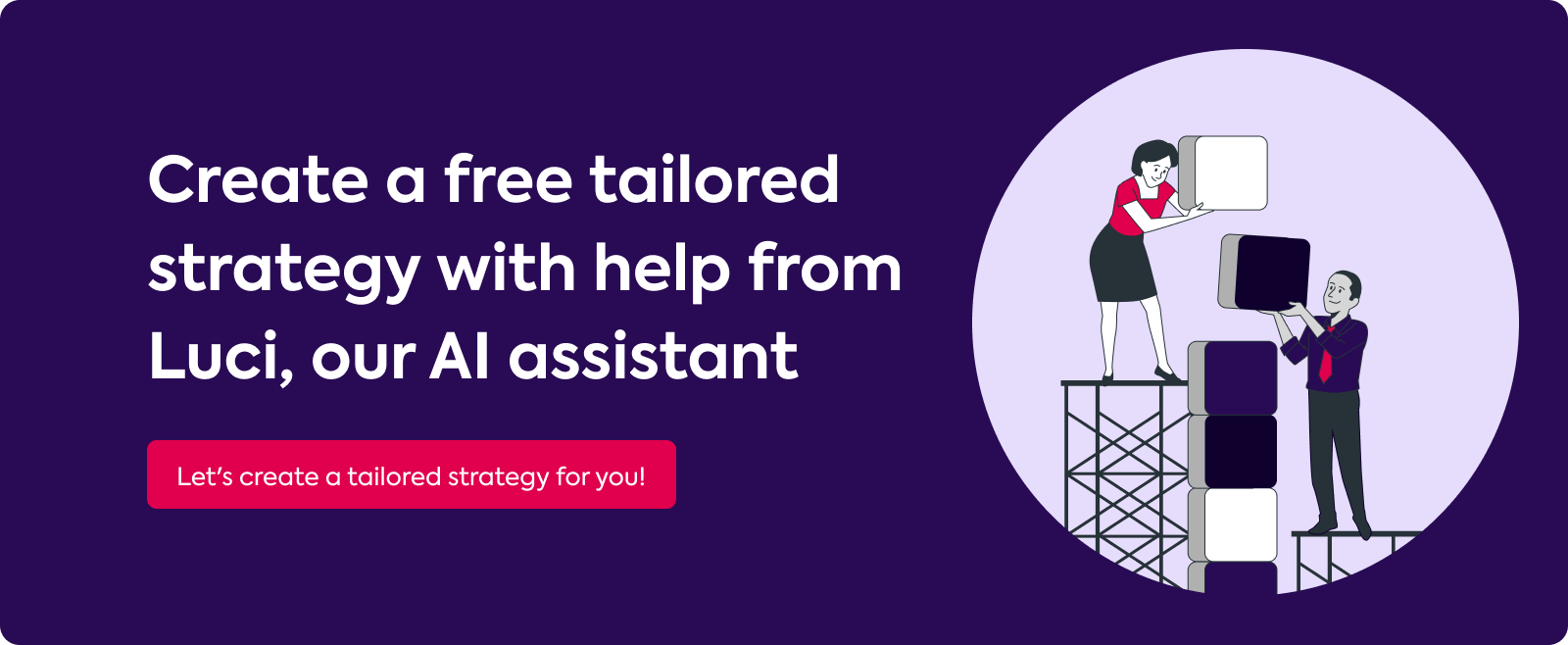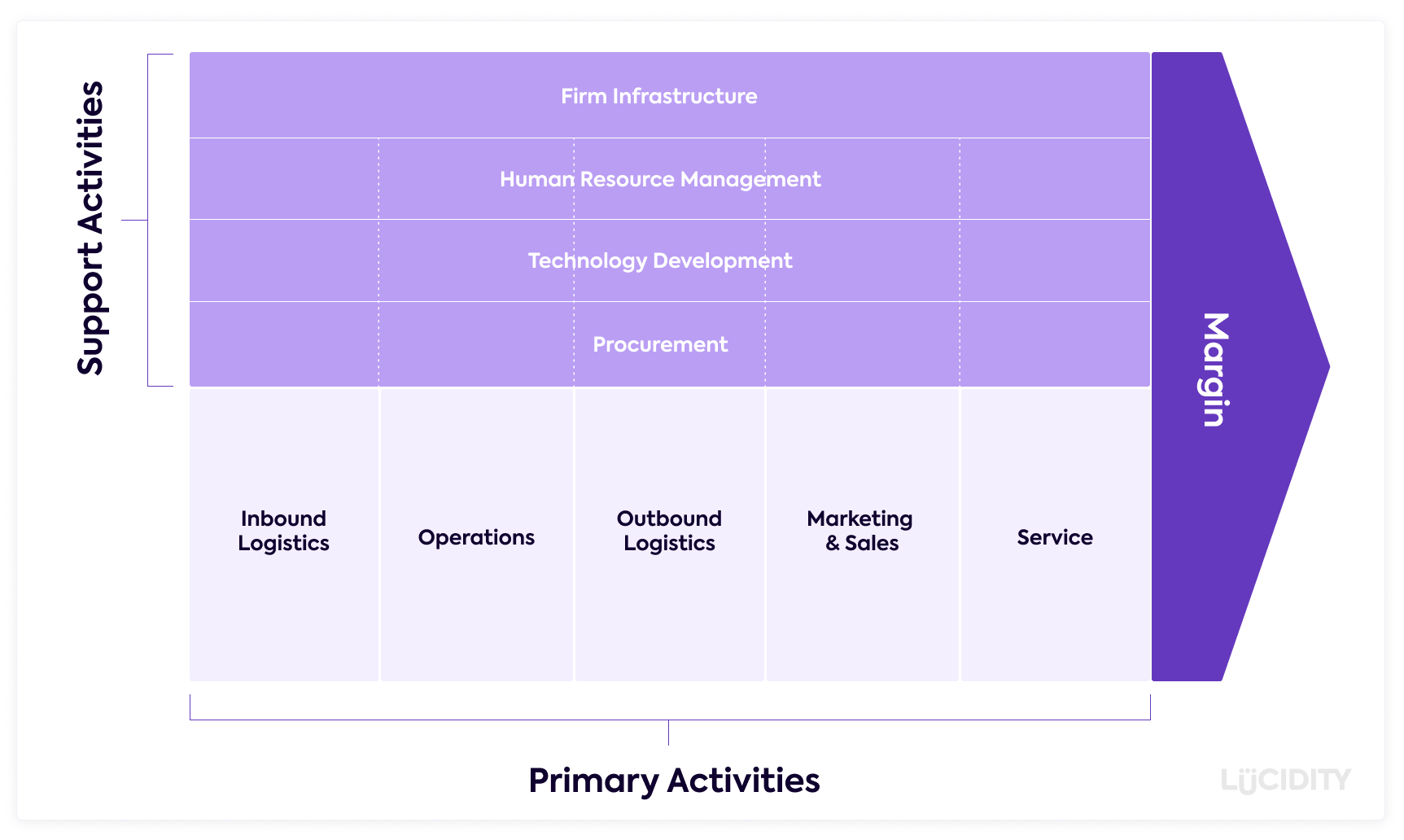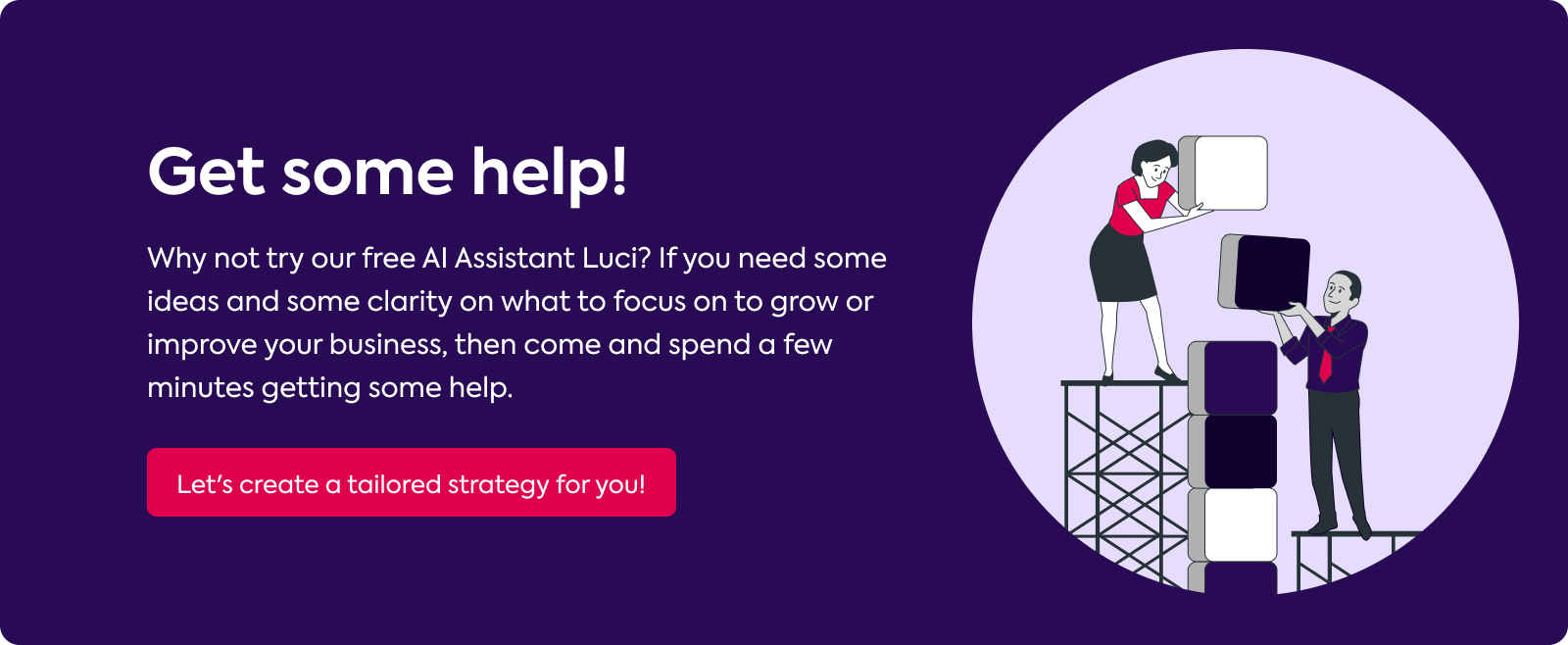Cookery is all about taking ingredients and producing something of greater value. Similarly, businesses take different ingredients and produce something of greater value. Your success is in ensuring the value is high and the gap between the cost of getting those inputs and the output is as big as possible… and that’s where this Porter’s Value Chain framework can help.
What is Porter’s Value Chain?
Porter’s Value Chain is a way to map out how your business creates value for the market. In simple terms every organisation takes a collection of inputs and produces output. The output has more value to their audience than the inputs.
Your business makes a margin by increasing the gap between the cost of creating that value and the value itself.
It’s easy to think about this in manufacturing because the process is literally taking raw materials and converting them into a product, but the same framework applies to any organisation – even the non-profit space. Your output may not always be something physical, but it is a result of inputs.
Porter’s Value Chain is a way to work through how you create this value and in doing so will help you with your competitive advantage.
What are the parts of Porter’s Value Chain?
Porter’s Value Chain divides business activities into two categories:
- Primary Activities that directly develop your end product or service
- Secondary Activities that support the Primary ones to make them efficiency and effective
The image above is the Value Chain, a framework to list all of these activities in a single place.
What are the Primary Activities in Porter’s Value Chain?
Primary activities are those that directly develop the creation of value and competitive advantage including:
Inbound Logistics
Inbound Logistics are the relationships, processes and activities that relate to getting inputs into the business. It can include supplier relationships, physical transport of goods, talent pipelines, etc.
Operations
Operations are the vital processes that convert the input you receive as a business through to the valuable output that customers receive.
Outbound Logistics
Outbound Logistics are the activities relating to the delivery of the product or service to the end customer. For businesses where the end value is a physical product, this group would include the collection, storage and disruption of the product.
Marketing & Sales
This one probably doesn’t need an explanation, but for consistency we’ll add one! Marketing and Sales are any activities that relate to informing the prospective customers, developing and closing pipeline, and aiding in the purchase of the products.
Service
Activates classed as Service are any that occur after sale and relate to keeping customers engaged, products working, churn low, or continued engagement.
What are the Secondary Activities in Porter’s Value Chain?
Secondary activities are any that support the primary in making them more effective and efficient, including:
Infrastructure
Infrastructure is a catch up for activities such as finance, quality, regulation, and general management. All of the different departments that support a business day to day.
Technological Developments
Relating strongly to Operations, these activities relate to any technology (be it hardware, software, tactic knowledge), required to support the transition of input to output. If you’re a software business then your own product wouldn’t fall into this, but tools you use to build it would do.
Human Resources Management
HR plays such an important role in supporting the wider business and, especially these days, is becoming much more strategically important. This activity incorporates hiring, training, developing, ensuring wellbeing, and more.
Procurement
Procurement activities are any activities relating to the acquisition of inputs or resources for the business to operate. They relate strongly to both Inbound Logistics and Operations.
What are the advantages of Porter’s Value Chain?
The advantages to Porter’s Value Chain analysis include:
- It produces a clear map of all key activities
- It can help you improve efficiency and focus, thus your margin
- Clarity around how your business works helps you make strategic decisions
- It allows you to focus on the internal part of your business without wider distractions
What are the disadvantages of Porter’s Value Chain?
There are some limitations to keep in mind in this model such as:
- Strategically departments such as Finance are placed in a “catch all group”, thus perhaps reducing the focus on this area
- HR has transformed considerably since 1985, and whilst is definitely a secondary activity should be given as much time as the primary ones.
- Breaking down your operations can mean you lose sight of your major strategic objectives
- The model was developed before predominantly digital businesses/Internet and, while it can be adapted, sometimes the fit isn’t perfect
What frameworks work well with Porter’s Value Chain?
As Value Chain is exclusively an internal framework, it is complemented well by frameworks that are exclusively external such as Five Forces. Once both Five Forces and Value Chain are complete, your SWOT Analysis will likely come out more comprehensive and useful too.
Who invented Porter’s Five Forces?
Michael Porter invented the Value Chain in his 1985 book Competitive Advantage: Creating and Sustaining Superior Performance. You may have heard of Porter before, he’s also responsible for Porter’s Five Forces and Porter’s Generic Strategies – quite the string of smash hits, strategic planning wise!















